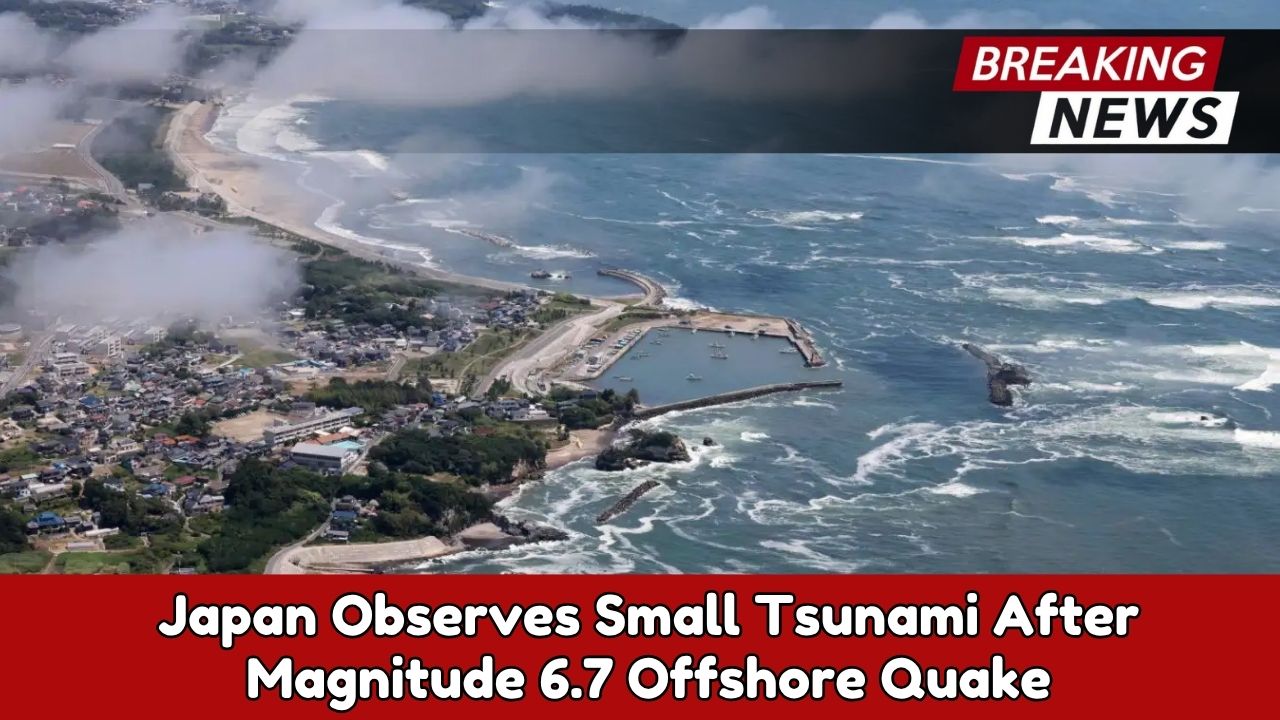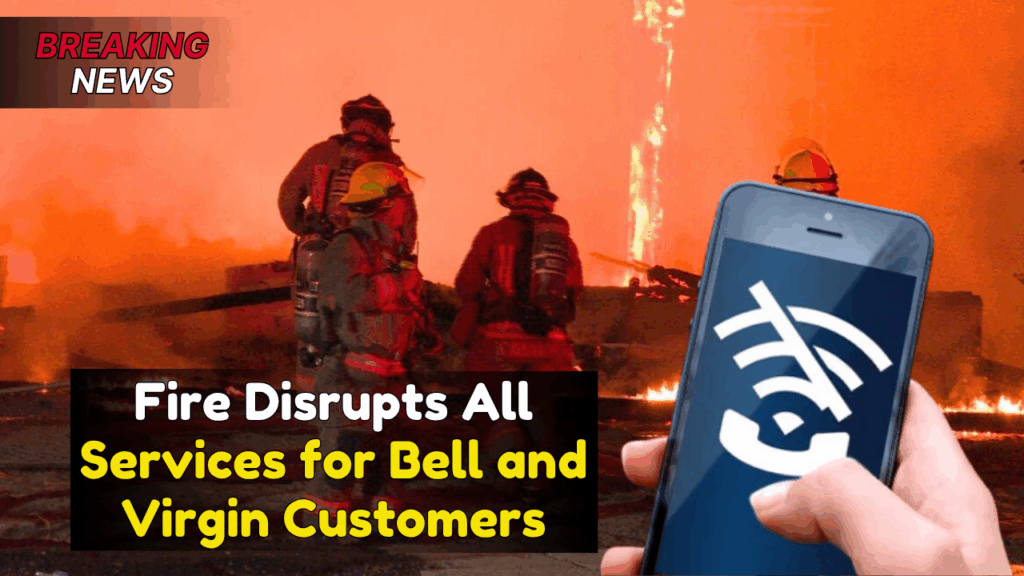Japan’s northern Pacific coast experienced a short lived tsunami advisory after a strong offshore earthquake near Iwate Prefecture on the evening of November 9. The Japan Meteorological Agency reported a magnitude 6.7 event that prompted immediate alerts for coastal communities. Within minutes, tiny tsunami waves arrived, including a measurable 10 centimeter wave at Ofunato. Although the ocean surface appeared calm on live television feeds and only small waves were observed, officials urged continued caution because even minor sea level changes can create dangerous currents near harbors and river mouths.
This report reconstructs the timeline, summarizes official guidance, explains what a tsunami advisory entails, and situates the event within Japan’s broader seismic setting.
Timeline of Key Events

- 5.03 pm: A strong offshore earthquake occurs in waters off Iwate Prefecture.
- Minutes after the main shock: The Japan Meteorological Agency issues a tsunami advisory for the Iwate coast, warning that waves could approach at any moment and might reach up to 1 meter in height.
- 5.37 pm: The first tsunami arrival is detected at Miyako, Iwate, though the wave is too small for a precise height measurement.
- 5.39 pm: A 10 centimeter wave is observed at Ofunato.
- Following the main shock: Aftershocks between magnitude 5.3 and 6.3 are recorded. Earlier the same day, the broader region had already seen a cluster of offshore tremors ranging from magnitude 4.8 to 5.8 that did not trigger advisories.
Throughout the evening, television feeds showed largely calm seas despite the advisory, a reminder that tsunami energy does not always manifest as visually dramatic waves but can still produce hazardous currents.
Short Summary
Item |
Details |
|---|---|
Event |
Offshore earthquake near Iwate Prefecture followed by tiny tsunami |
Date and Time |
November 9, main quake around 5.03 pm local time |
Reported Magnitude |
JMA 6.7; USGS 6.8 |
Tsunami Observations |
First arrival at Miyako at 5.37 pm; 10 cm wave at Ofunato shortly after |
Advisory |
Tsunami advisory for Iwate coast with potential waves up to 1 m |
Aftershocks |
Series between magnitude 5.3 and 6.3; additional smaller quakes earlier in the day |
Historical Context |
Same coast heavily impacted by the 2011 magnitude 9.0 quake and tsunami |
Official Site |
Japan Meteorological Agency: https://www.jma.go.jp |
What a Tsunami Advisory Means
A tsunami advisory indicates that a tsunami with the potential to cause minor inundation or strong currents is expected or already occurring. It is not the highest level of alert, yet it still calls for practical precautions:
- Keep away from beaches, seawalls, fishing ports, and river mouths.
- Suspend small boat operations and move vessels to safer waters if instructed.
- Follow local municipal guidance and do not return to coastal areas until authorities lift the advisory.
- Expect strong and unpredictable currents rather than towering waves.
For this event, the observed waves were small, but advisories remained prudent given the uncertainty immediately after a strong offshore quake.
Magnitude Differences and Why They Occur
The Japan Meteorological Agency reported the main quake at magnitude 6.7, while the US Geological Survey listed it at magnitude 6.8. Slight discrepancies are common due to differences in sensor networks, magnitude scales, and the parameters used in early solutions. As agencies refine their calculations, figures can shift marginally without changing the overall hazard assessment.
Aftershocks and Same Day Seismicity
Following the main shock, aftershocks in the magnitude 5.3 to 6.3 range were detected. The region had already been active earlier in the day with several offshore tremors between magnitude 4.8 and 5.8. Aftershocks are a normal part of earthquake sequences. They can occasionally be strong enough to cause additional rockfalls, liquefaction in susceptible areas, or renewed marine disturbances. Residents are advised to secure interior furnishings, keep exit routes clear, and be prepared for further shaking.
Historical Context along the Iwate Coast
The Iwate and Sanriku coasts carry a profound historical memory of tsunami disasters. The magnitude 9.0 undersea earthquake in 2011 produced catastrophic waves that caused immense loss of life and triggered a nuclear accident at Fukushima. That event reshaped disaster awareness, strengthened early warning systems, and improved evacuation planning across coastal communities. While the November 9 event produced only minor waves, the advisory and the rapid operational response reflect lessons learned and the priority placed on precaution.
Japan’s Tectonic Setting
Japan straddles the boundaries of multiple tectonic plates along the Pacific Ring of Fire. Subduction and plate interactions generate frequent earthquakes, from small tremors felt daily to rare but powerful megathrust events. The archipelago records roughly 1,500 earthquakes each year. Most are mild, yet their impact varies depending on depth, distance to shore, and local geology. Offshore quakes demand particular attention due to the risk of tsunamis, even when initial reports indicate small amplitudes.
Safety Guidance for Coastal Residents and Visitors
- Heed official advisories: If a tsunami advisory is issued, move away from the shoreline and follow local instructions.
- Do not rely on visual cues: Tsunami currents can be dangerous even when the sea looks calm.
- Stay informed: Use official sources such as JMA, local government alerts, and municipal disaster apps.
- Prepare in advance: Know evacuation routes, identify higher ground, and keep an emergency kit with water, food, a flashlight, batteries, and a portable radio.
- Expect aftershocks: Secure heavy furniture, keep pathways clear, and avoid unstable slopes or older structures showing damage.
Monitoring and Official Information
For real time bulletins, tsunami advisories, and updated intensity maps, consult the Japan Meteorological Agency’s website:
https://www.jma.go.jp
Local governments and broadcasters also provide multilingual emergency updates, especially in tourist hubs.
Frequently Asked Questions
1. Why was a tsunami advisory issued if the waves were tiny
Advisories are based on potential risk, not only on what has already arrived. Small initial waves can be followed by stronger surges or dangerous currents, so authorities issue advisories to keep people away from hazardous coastal areas.
2. How long do tsunami advisories usually remain in effect
Duration varies. Advisories are lifted once observations and model guidance indicate that hazardous conditions have subsided. Always wait for an official cancellation before returning to the shore.
3. Why did JMA and USGS report slightly different magnitudes
They use different networks, models, and magnitude scales. Early estimates can differ by a tenth or two without changing safety guidance.
4. Are aftershocks likely to generate additional tsunami waves
Aftershocks can, in some cases, produce additional sea level changes if they are large and shallow enough. This is why coastal advisories may remain in place and why continuous monitoring is essential.
5. What should boat owners do during a tsunami advisory
Follow port authority instructions. Small craft should avoid harbors and nearshore areas where currents are strongest. If directed and safe to do so, vessels may be moved to designated deeper waters, but only under official guidance.
Conclusion
The November 9 offshore earthquake near Iwate triggered a swift tsunami advisory and small waves at several points along Japan’s northern Pacific coast. While the observed amplitudes were minor, the response highlighted the importance of early warnings and public readiness. Given Japan’s location on the Ring of Fire and its history with large tsunamis, advisories play a crucial role in preventing injuries from strong currents and sudden sea level changes. Residents and visitors should continue to rely on official updates, respect coastal cautions until advisories are lifted, and maintain preparedness for aftershocks and related hazards.
Official site for updates
Japan Meteorological Agency: https://www.jma.go.jp
For More Information Click HERE











